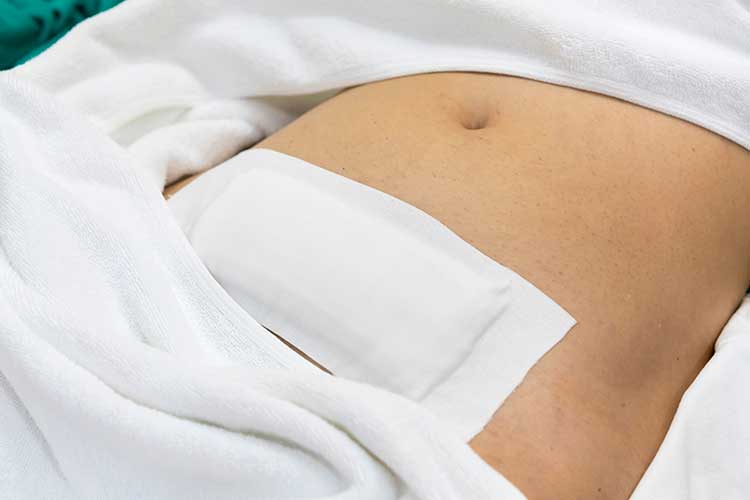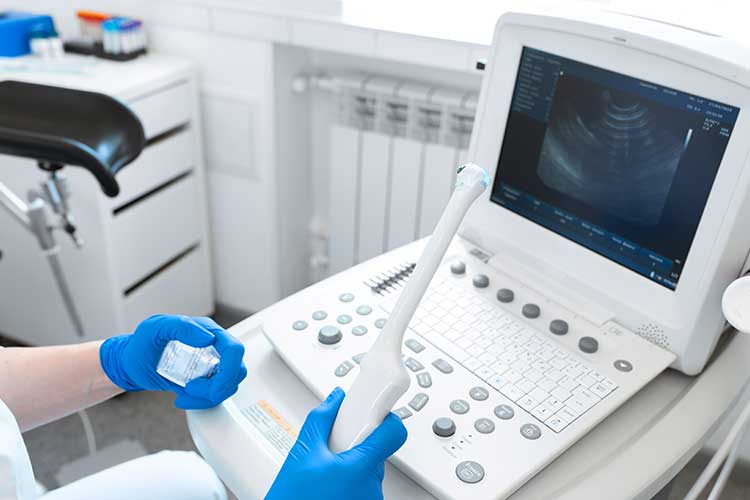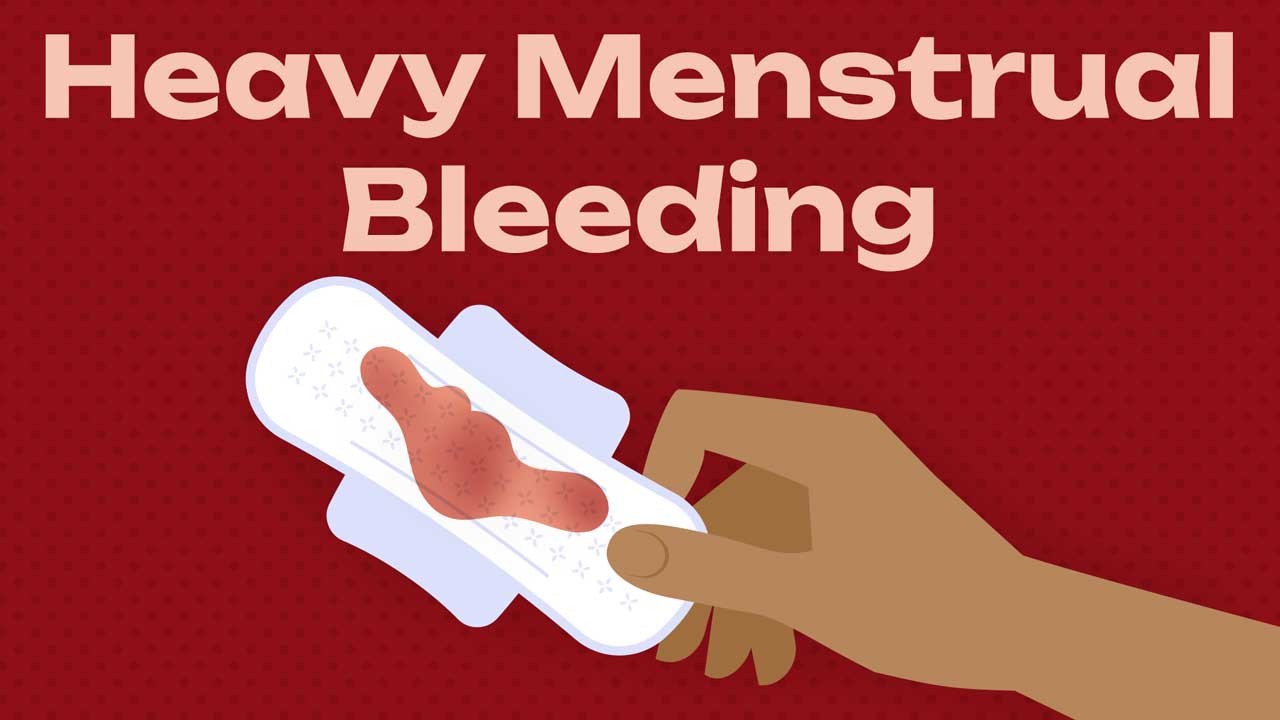Heavy menstrual bleeding is the most common type of abnormal uterine bleeding, affecting 25% of women at reproductive age (ACSQHC 2017).
What is Heavy Menstrual Bleeding?
Generally, about 30 to 40 ml (six to eight teaspoons) of blood is lost during each menstruation (RANZCOG 2018). However, what is considered ‘normal’ varies between individuals, making abnormalities difficult to quantify (NHS 2018).
Instead, heavy menstrual bleeding is defined by the Australian Commission on Safety and Quality in Health Care as:
‘Excessive menstrual blood loss which interferes with the woman's physical, emotional, social and material quality of life, and which can occur alone or in combination with other symptoms’ (2017).
Note: The terms ‘dysfunctional uterine bleeding’ and ‘menorrhagia’ are no longer recommended to describe heavy menstrual bleeding (ACSQHC 2017).
Symptoms of Heavy Menstrual Bleeding
Symptoms that may indicate heavy menstrual bleeding include:
- Bleeding through clothing
- Being unable to leave the house due to bleeding
- Changing pads and tampons often (including during the night)
- Passing large clots (bigger than a 50c coin)
- Having to use towels or large maternity pads while sleeping
- Prolonged bleeding that lasts for over eight days
- Anaemia-related symptoms caused by a drop in iron and red blood cells (fatigue, weakness, dizziness, shortness of breath, chest pains).
(ACSQHC 2017; RANZCOG 2018)

Many patients who experience heavy menstrual bleeding also suffer from severe dysmenorrhoea (period pain) (ACSQHC 2017).
Causes of Heavy Menstrual Bleeding
Heavy menstrual bleeding has various causes. In some cases, there may be more than one (ACSQHC 2017).
The International Federation of Gynecology and Obstetrics (FIGO)’s PALM-COEIN system for classifying abnormal uterine bleeding categorises potential causes as either structural (i.e. measurable through imaging or histopathology) or non-structural:
| Structural causes (PALM) | Non-structural causes (COEIN) |
|---|---|
| P - Polyps (about 10% of cases) | C - Coagulopathy |
| A - Adenomyosis | O - Ovulatory |
| L - Leiomyoma (fibroids) (about 30% of cases) | E - Endometrial |
| M - Malignancy or hyperplasia | I - Iatrogenic |
| N - Not yet classified |
(Adapted from ACSQHC 2017; Munro, Critchley & Fraser 2011)
Other causes include:
- Miscarriage
- Ectopic pregnancy
- Hormonal disorders such as polycystic ovarian syndrome (PCOS)
- Infections such as chlamydia and pelvic inflammatory disease (PID)
- Presence of an intrauterine device (IUD).
(Better Health Channel 2022)
Diagnosing Heavy Menstrual Bleeding
Depending on the patient, heavy menstrual bleeding may be diagnosed through:
- Physical examination
- Comprehensive patient history, including age, symptoms, comorbidities and the duration and nature of bleeding
- Transvaginal ultrasound (for suspected structural causes)
- Laboratory testing for haemostatic disorders
- A blood test to assess for anaemia, iron levels, thyroid disease or bleeding disorders
- Internal swabs to assess for pelvic infection
- Biopsy of the endometrium (uterus lining)
- Hysteroscopy.
(ACSQHC 2017; RANZCOG 2018)
Treatment for Heavy Menstrual Bleeding
Treatment options include:
- Pharmaceutical treatment
- Insertion of an intrauterine progestogen device
- Endometrial ablation (surgical removal of the uterus lining)
- Removing or destroying fibroids or polyps through surgery or radiology
- Hysterectomy.
(ACSQHC 2017)
Hysterectomy
A hysterectomy is a procedure in which the uterus is surgically removed, permanently stopping menstruation. The cervix, ovaries, fallopian tubes and surrounding tissue may or may not be removed as well (ACSQHC 2017).
Hysterectomy is not recommended as a first-line treatment for heavy menstrual bleeding unless less-invasive options are inappropriate (ACSQHC 2017).
This is because:
- Patients who have undergone a hysterectomy are no longer able to become pregnant
- Hysterectomy is irreversible
- Hysterectomy has the second-highest rate of unexpected postoperative hospital readmission among all procedures monitored by the Australian Institute of Health and Welfare
- Hysterectomy may lead to short-term complications such as infection, bleeding and bowel or urinary tract injury
- Hysterectomy may lead to long-term complications such as urinary incontinence, pelvic organ prolapse and early menopause.
(ACSQHC 2017)

Heavy Menstrual Bleeding Clinical Care Standard
In 2017, the Australian Commission on Safety and Quality in Health Care released the Heavy Menstrual Bleeding Clinical Care Standard. This standard aims to ensure that patients experiencing heavy menstrual bleeding receive the least invasive and most effective treatment possible for their individual needs (ACSQHC 2017).
The standard contains eight quality statements:
1. Assessment and Diagnosis
Patients presenting with heavy menstrual bleeding should undergo a comprehensive assessment. The clinician should take into account:
- The patient’s sexual and reproductive health, desire for fertility and cervical screening status
- The nature of the bleeding (duration, timing, heaviness and chronicity) and its impact on quality of life
- Whether the patient is experiencing symptoms such as pelvic pain and pressure or fatigue
- Whether the patient is experiencing symptoms indicative of a bleeding disorder
- Whether the patient is experiencing symptoms indicative of PCOS (e.g. acne, hirsutism and irregular bleeding)
- Whether the patient is experiencing symptoms indicative of hyperthyroidism
- Whether the patient has risk factors for endometrial cancer
- Whether the patient has an iron deficiency (with or without anaemia).
If clinically appropriate, a bi-manual pelvic examination should be performed in order to identify any masses or an abnormal uterine size.
Depending on the assessment findings, the clinician may recommend additional investigations such as:
- A pregnancy test (to exclude the possibility of pregnancy)
- An iron deficiency test
- An anaemia test
- Blood tests
- A cervical screening test
- An ultrasound.
(ACSQHC 2017)
2. Informed Choice and Shared Decision-Making
Patients should be comprehensively informed about their treatment options, along with their potential risks and benefits. Clinicians should ask patients about their preferences, take their individual situations into account (e.g. culture and religion) and provide information in a clear, understandable form.
(ACSQHC 2017)3. Initial Treatment is Pharmaceutical
Pharmaceutical therapy should be offered before considering procedural or surgical interventions. In some cases, medicines are able to effectively treat symptoms on their own. The specific therapy chosen will depend on a variety of patient factors.
In cases where both hormonal and non-hormonal therapy are acceptable, it is recommended that treatments are tried in the following order:
- Levonorgestrel-releasing intra-uterine system (LNG-IUS)
- Tranexamic acid, non-steroidal anti-inflammatory drugs (NSAIDs) or combined oral contraceptives
- Cyclic norethisterone or injected long-acting progestogens.
If further investigations are required, patients should be prescribed oral treatment to relieve symptoms until the investigations can be performed.
(ACSQHC 2017)
4. Quality Ultrasound
Patients should receive a transvaginal ultrasound as first-line imaging if structural or histological causes are suspected, for example:
- If the patient has an increased risk of cancer
- Pathology is suspected upon examination
- If the patient has not responded to treatment after six months.
A transabdominal ultrasound is an acceptable but less-accurate alternative if transvaginal ultrasound is inappropriate, unavailable or unwanted by the patient.
Optimal ultrasound timing is between days 5 and 10 of the menstrual cycle, as this allows for the most accurate measurement of endometrial thickness.
(ACSQHC 2017)

5. Intra-Uterine Hormonal Devices
The levonorgestrel intra-uterine system is the most effective pharmaceutical treatment for heavy menstrual bleeding and should be offered if clinically appropriate.
Clinical appropriateness is determined by taking into account:
- Suitability of a long-acting contraceptive
- Patient’s age
- Contraindications and precautions
- Potential adverse effects
- Size and shape of the patient’s uterine cavity.
(ACSQHC 2017)
6. Specialist Referral
Patients with suspicious clinical findings upon assessment or ultrasound should be referred to a specialist early. Those who should be referred include:
- Patients with an increased risk of cancer
- Patients with fibroids or polyps
- Patients who have not responded to treatment after six months.
(ACSQHC 2017)
7. Uterine-Preserving Alternatives to Hysterectomy
Patients considering surgical intervention should be offered the least invasive option that is clinically appropriate before considering a hysterectomy.
Uterine-preserving alternatives to hysterectomy include:
- Endometrial ablation
- Fibroid or polyp removal.
(ACSQHC 2017)
8. Hysterectomy
Hysterectomy may be considered if:
- Alternative options are not clinically appropriate
- Alternative options have been ineffective or intolerable
- The patient wishes to consider it.
Patients must be provided with balanced information that addresses both the potential benefits and risks of the procedure. They should also be given adequate time to make a decision. Clinicians should ensure they are culturally sensitive when discussing this procedure.
(ACSQHC 2017)
Test Your Knowledge
Question 1 of 3
Which one of the following factors is a non-structural cause of heavy menstrual bleeding?
Topics
References
- Australian Commission on Safety and Quality in Health Care 2017, Heavy Menstrual Bleeding Clinical Care Standard, ACSQHC, viewed 18 February 2021, https://www.safetyandquality.gov.au/sites/default/files/migrated/Heavy-Menstrual-Bleeding-Clinical-Care-Standard.pdf
- Better Health Channel 2017, Menstruation - Abnormal Bleeding, Better Health Channel, viewed 18 February 2021, https://www.betterhealth.vic.gov.au/health/healthyliving/menstruation-abnormal-bleeding
- Munro, M G, Critchley, H O D & Fraser, I S 2011 (FIGO Menstrual Disorders Working Group), ‘The FIGO Classification of Causes of Abnormal Uterine Bleeding in the Reproductive Years’, Fertility and Sterility, vol. 95, no. 7, viewed 18 February 2021, https://www.fertstert.org/article/S0015-0282(11)00509-7/fulltext
- National Health Service 2018, Heavy Periods, NHS, viewed 18 February 2021, https://www.nhs.uk/conditions/heavy-periods/
- Royal Australian and New Zealand College of Obstetricians and Gynaecologists 2018, Heavy Menstrual Bleeding, RANZCOG, viewed 18 February 2021, https://ranzcog.edu.au/womens-health/patient-information-resources/heavy-menstrual-bleeding
 New
New 
